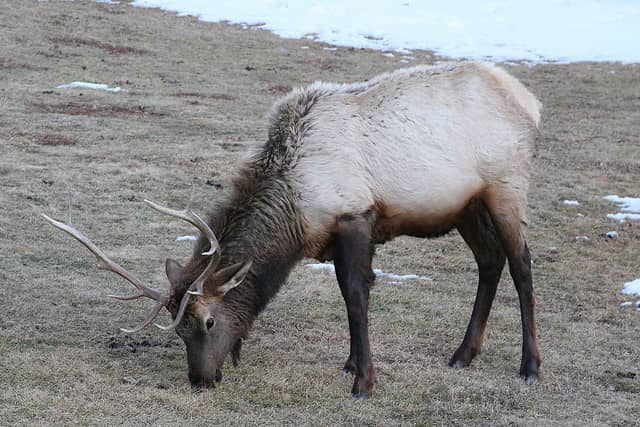Study Finds Wolves’ Presence May Reduce Elk Population in Several Ways
OutdoorHub Reporters 11.07.12

A recently released Montana State University (MSU) study found that the presence of wolves in elk territory reduces elk population, but not only because elk are prime wolf food. The simple presence of wolves alters elk behavior in a way that reduces the animals’ propensity to reproduce.
Scott Creel, professor of Conservation Biology and Ecology at MSU and co-author David Christianson presented the findings of their study in a seminar held at the school last Thursday. The study was also presented to the Society of Conservation Biology last week.
The men noted a marked change in elk population dynamics in regions of Montana and Wyoming where wolf recovery was underway compared to wolf-less regions .
The seminar brief writes, “we examined changes in population size and calf recruitment, and tested for relationships with all of the variables that have been hypothesized to affect elk dynamics. These include changes in density, winter snow accumulation, growing season conditions, human harvest, predation by bears, direct predation by wolves, and the ‘risk effects’ of wolf presence. Some of these variables were strongly correlated with recent changes in elk dynamics, while others were not.”
Creel studied 12 elk management areas in Montana, Wyoming and Yellowstone National Park that all had data on elk populations, predators and climate characteristics spanning a 30-year period before and after wolf recolonization to allow for a control group.
Six of the management areas contained established wolf packs, the other six did not. Unsurprisingly, areas with wolf packs showed reduced elk numbers, but other trends stuck out.
For both areas with and without wolves, elk population declines if there is a severe winter or if herd density gets too high. Both factors cause fewer calves to be born or survive. In mild winters, elk calf recruitment improves, but only in areas without wolves. In areas with wolves, calf recruitment doesn’t increase as much again.
“Due to climate change, winters are getting milder, which should improve calf recruitment, but calf recruitment is getting worse,” Creel said.
Creel explained why fewer calves are surviving mild winters by calculating the number of calves that should have been born in a certain area and subtracting the number of calves that he calculated would have been eaten by predators from that number. He compared his final number to that of management areas and found that they were much less than predicted. That means that low calf numbers were not attributed solely to predation or a cold winter. Grizzly predation also plays a part, but it does not have a significant impact.
His hypothesis is that elk feed less around predators. Their diet and activity change, which impacts how much energy a cow has to be able to produce calves. This type of behavior has been noted in other animal species.
Creel told the Bozeman Daily Chronicle that it’s not up to him how wildlife managers use this information, but he hopes that it will help wildlife officials to make informed decisions about conservation. “If we’re really going to have science-based management, we have to understand the causes of the changes we see,” Creel said. “Science has to get out in the lead.”

